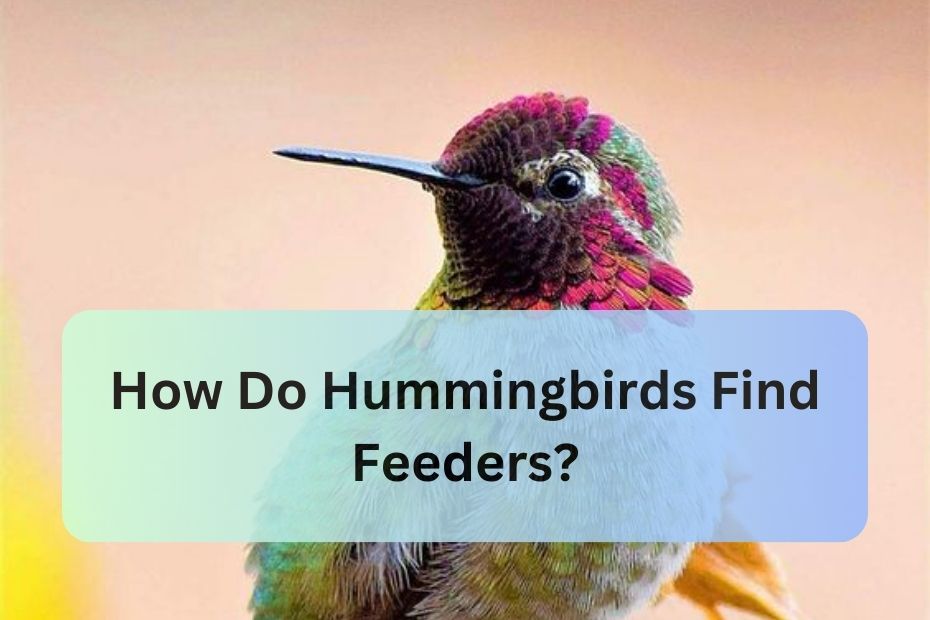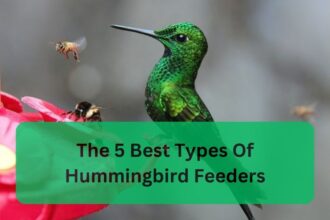How Do Hummingbirds Find Feeders?
Hummingbirds are fascinating creatures renowned for their iridescent plumage, incredible agility, and insatiable appetite for nectar. For bird enthusiasts and casual observers alike, witnessing these tiny marvels in action is a joyous experience. But have you ever wondered how hummingbirds find feeders with such precision? In this article, we’ll delve into the remarkable abilities of hummingbirds and uncover the secrets behind their feeder navigation.
Introduction
Fascination with hummingbirds: Hummingbirds captivate our imagination with their dazzling colors and mesmerizing aerial acrobatics. Their unique ability to hover in mid-air and dart from flower to flower has earned them the title of nature’s jewels.
Importance of understanding their behavior: As backyard birdwatchers, understanding the behavior of hummingbirds enriches our appreciation for these remarkable creatures. Learning how they locate feeders not only provides insight into their survival strategies but also allows us to create inviting habitats for them in our own yards.
Hummingbird Vision
Unique visual capabilities: Hummingbirds possess exceptional visual acuity, allowing them to perceive details with incredible clarity. Their eyesight is adapted for fast movement and accurate navigation, essential skills for locating food sources efficiently.
Perception of color and movement: Hummingbirds are particularly sensitive to color, especially hues in the red spectrum. Brightly colored flowers and feeders stand out against their surroundings, making them easy targets for these nectar-loving birds. Additionally, hummingbirds are adept at detecting movement, allowing them to quickly spot potential food sources from a distance.
Feeder Placement
Factors influencing feeder location: When positioning hummingbird feeders in your yard, several factors come into play. Feeder placement should take into account factors such as sunlight exposure, proximity to shelter, and freedom from disturbance.
Importance of visibility and accessibility: Placing feeders in visible and accessible locations ensures that hummingbirds can easily locate and access them. Avoid placing feeders near windows or other reflective surfaces that may cause confusion or collisions.
Attracting Hummingbirds
Choosing the right feeder and nectar: Selecting a feeder with bright colors and perches will attract hummingbirds’ attention and provide them with a place to rest while feeding. Additionally, using homemade nectar made from a mixture of water and sugar (no red dye needed) will provide a nutritious and appealing food source for these birds.
Planting native flowers and providing perches: Planting a variety of native flowers that bloom throughout the year will attract hummingbirds to your yard naturally. Additionally, providing perches near feeders allows hummingbirds to rest and survey their surroundings before feeding.
Memory and Navigation
Hummingbird’s impressive memory: Hummingbirds possess remarkable memory capabilities, allowing them to remember the locations of reliable food sources, such as nectar-rich flowers and well-placed feeders. Once they’ve identified a reliable food source, they’ll return to it repeatedly, even after exploring other areas.
Ability to navigate complex environments: Despite their small size, hummingbirds are adept navigators capable of traversing vast distances during migration. Their keen spatial awareness and ability to recognize landmarks aid them in navigating complex environments, such as urban and suburban landscapes.
Understanding Feeder Signals
Hummingbirds’ keen observation skills: Hummingbirds rely on their acute observation skills to locate feeders amidst a sea of foliage and competing stimuli. They can quickly identify visual cues such as feeder color, shape, and movement, guiding them to their desired destination.
Responding to visual cues and landmarks: Once a hummingbird has located a feeder, it will memorize its position relative to nearby landmarks, such as trees, shrubs, or structures. These visual cues help them navigate back to the feeder with ease, ensuring a steady supply of nectar.
Conclusion
In conclusion, the ability of hummingbirds to find feeders with pinpoint accuracy is a testament to their remarkable visual acuity, memory, and navigational skills. By understanding the factors that influence feeder location and providing a welcoming habitat, we can create inviting environments for these beloved birds. So, the next time you observe a hummingbird visiting your feeder, take a moment to marvel at the intricacies of its navigation and appreciate the beauty of nature’s tiny marvels.
FAQs:
1. How far can hummingbirds travel in search of food? Hummingbirds have been known to travel hundreds of miles during migration, but they typically forage within a relatively small radius of their nesting area, usually within a few miles.
2. How often should I change the nectar in my hummingbird feeder? To prevent spoilage and bacterial growth, it’s essential to change the nectar in your hummingbird feeder every 3-5 days, especially during hot weather.
3. Do hummingbirds prefer certain colors of feeder? Hummingbirds are attracted to bright colors, especially shades of red, orange, and pink. However, they will visit feeders of any color as long as the nectar is fresh and readily available.
4. What should I do if I notice bees or wasps at my hummingbird feeder? To deter bees and wasps from your feeder, try using a feeder with bee guards or ant moats. Additionally, placing the feeder in a shaded area away from other insect attractants may help reduce unwanted visitors.
5. How can I attract more hummingbirds to my yard? In addition to providing feeders with fresh nectar, planting a variety of native flowers and providing water sources such as birdbaths or misters will attract hummingbirds to your yard. Creating a diverse and welcoming habitat will encourage these beautiful birds to visit regularly.
| Home | Click Here |
| Hummingbird | Click Here |






